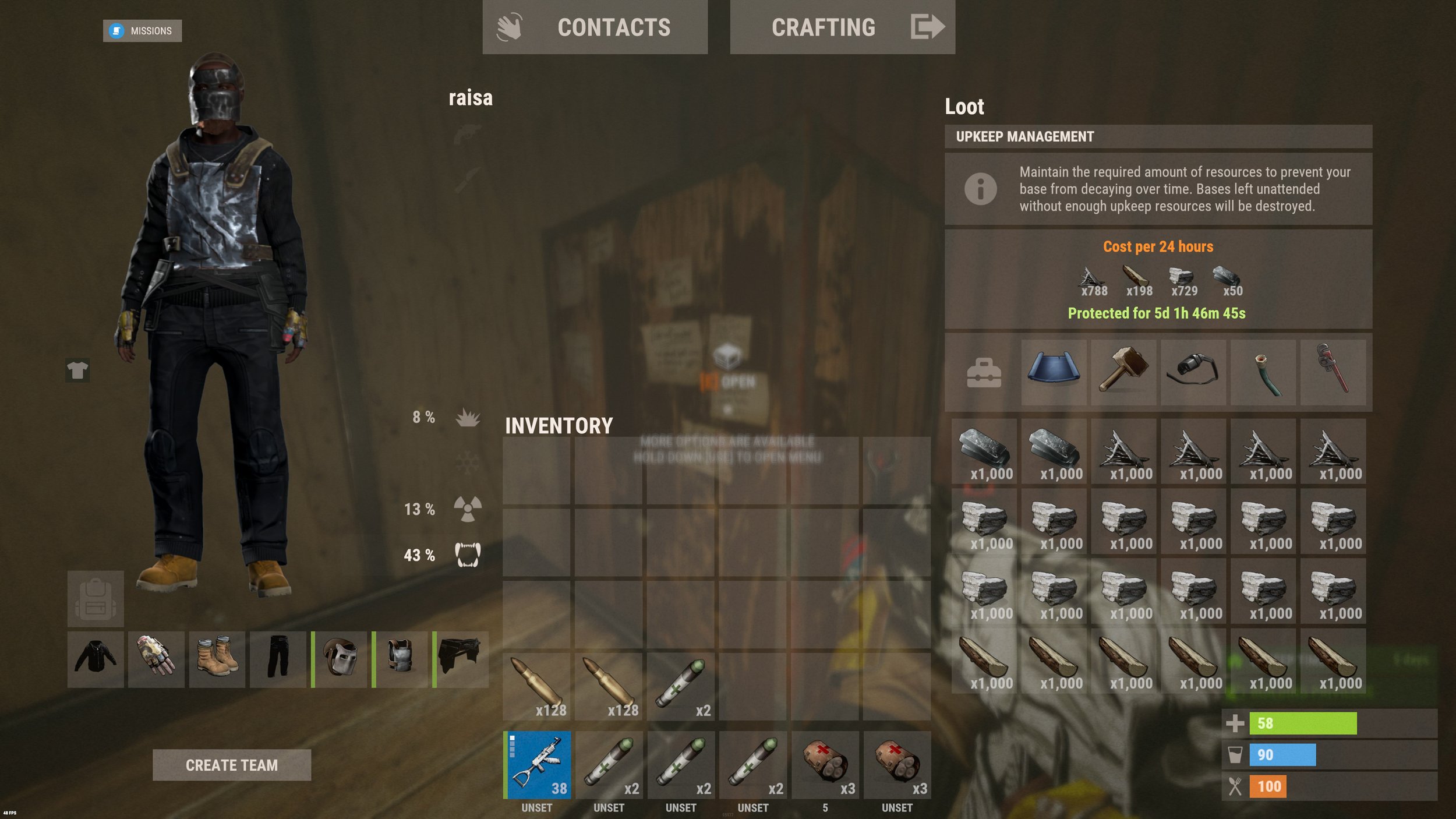Building: What You Need To Know
Basics Of A Good Base
In Rust, you have the freedom to make your base in any way you want. But there are a few things that all suitable bases have in common.
Locks
While key locks are great for the beginning of the game, you’ll want to upgrade to code locks as soon as possible. Key locks no longer require a key for the player that placed the lock (which is excellent for a solo player). However, they’re incredibly annoying if you play with anyone else. A code lock allows you to enter the code once, and you can automatically open the door whenever; make sure never to give your base codes out to strangers!
A code lock costs 100 metal fragments
A key lock costs 100 wood
Tool Cupboard
This is the single most important item in your base. Whoever has access to your tool cupboard can build, upgrade, and demolish in your building's authorized area. Ensure that only completely trusted people have access and that it's tough to get to.
A tool cupboard prevents most building and all upgrading within its building privilege zone for unauthorized players. This zone extends 16 meters out from each outer building component such as a wall or foundation. The tool cupboard can be placed anywhere in your build and covers any connected wall or foundation. You add resources to the tool cupboard, and the cupboard reports how many resources are required to avoid decay with 16 storage slots to hold building materials that are depleted over time.
Twig floors and ladders can be placed within building privilege zones without tool cupboard access.
Examples Of Tool Cupboard Coverage Using Stone High External Walls:
The further the main foundation of your base extends the wider the radius of the main tool cupboard
Airlock
An airlock is where you have two or more doors between the innermost part of your base and the outside. It assures that if someone chases you to your base or door camps you, they won't immediately have access to your loot. The bigger your base, the more airlocks you'll want/need.
Upgrades
There Are Currently 4 Upgrade Tiers In Building: Wood, Stone, Sheet Metal, and Armored.
Wood: Upgrade Cost 50 - 200 Wood Per Foundation, Wall, Or Floor
Durability 250 hp
1 Rocket
1 C4
Stone: Upgrade Cost 75 - 300 Stone Per Foundation, Wall, Or Floor
Durability 500 hp
4 Rocket
2 C4
Metal: Upgrade Cost 50 - 200 Metal Frags Per Foundation, Wall, Or Floor
Durability 1000 hp
8 Rocket
4 C4
Armor: Upgrade Cost 7 - 25 HQM Per Foundation, Wall, Or Floor
Durability 2000 hp
12 Rocket
8 C4
Building Tiers From Left To Right: Twig, Wood, Stone, Sheet Metal, Armored
Soft Side vs. Hard Side
One of the most critical parts of upgrading is accidentally leaving your walls with the soft side facing outward, rendering your upgrades nearly useless.
Check your walls' texture to ensure they are not soft-sided. Lighter or smoother textures belong inward, whereas rougher and darker wall textures belong outward.
For example, stone walls from the hard side take 1 damage point per 8 pickaxe hits, but from the soft side, they take 1.2 damage for every hit (so only 7 pickaxes for one stone wall).
Soft Sides From Left To Right: Twig, Wood, Stone, Sheet Metal, Armored
Doors
Wood doors are suitable for starting out; however, you will want to switch to sheet metal quickly. At only 200 health, wood doors can be taken down in less than a minute with a flamethrower and nearly as quickly with Eoka Pistols or Shotguns.
Sheet Metal Doors are stronger and provide better protection from quick raids. The strongest doors in the game are Garage Doors and Armored Doors, both of which require blueprints to learn or research through the tech tree.
Doors, From Left To Right: Garage Door, Armored, Sheet Metal, Wood
Compounding
Once you have an established base, you can look to compound it behind the added safety of high external walls. There are 2 variations of walls: Stone and Wood. Each is accompanied by its version of a high external gate. Still, if you're up to the task, you can make your own variation of an external gatehouse as an entrance for more flexibility and quicker access.
Note: High External Gates and Walls must remain within a TC radius to keep them from decaying. On the other hand, the external gatehouse must be attached to the main base foundation or an external Tool Cupboard.




